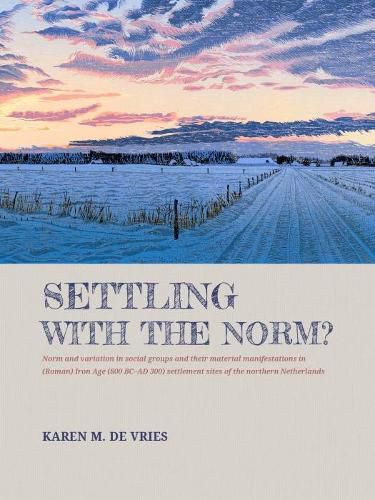Readings Newsletter
Become a Readings Member to make your shopping experience even easier.
Sign in or sign up for free!
You’re not far away from qualifying for FREE standard shipping within Australia
You’ve qualified for FREE standard shipping within Australia
The cart is loading…






When studying later prehistoric societies, it is evident that shared practices, as well as variations, exist in the settlement record. Traditionally, the emphasis has mainly been on the elements shared on large scales, the widely shared norms. Variations in material culture have received little attention. This is regrettable, because through the study of both norm and variation in material culture, it is possible to understand how people are part of larger communities and, at the same time, express their affiliation to smaller social groups.
In this book, housebuilding practices, general deposition practices and special deposition practices from (Roman) Iron Age (800 BC-AD 300) settlements in the northern Netherlands are studied on different scales as practices that can be similar and different at the same time. Based on the analyses, normativity and variation in material culture can be understood in different ways. More than just searching for a better understanding of the (Roman) Iron Age societies in the northern Netherlands, this volume also explores how the use of typochronologies and the choices researchers make influence our understanding of the past. It will be of interest to anyone studying later prehistoric settlements and archaeological methodology in general.
$9.00 standard shipping within Australia
FREE standard shipping within Australia for orders over $100.00
Express & International shipping calculated at checkout
When studying later prehistoric societies, it is evident that shared practices, as well as variations, exist in the settlement record. Traditionally, the emphasis has mainly been on the elements shared on large scales, the widely shared norms. Variations in material culture have received little attention. This is regrettable, because through the study of both norm and variation in material culture, it is possible to understand how people are part of larger communities and, at the same time, express their affiliation to smaller social groups.
In this book, housebuilding practices, general deposition practices and special deposition practices from (Roman) Iron Age (800 BC-AD 300) settlements in the northern Netherlands are studied on different scales as practices that can be similar and different at the same time. Based on the analyses, normativity and variation in material culture can be understood in different ways. More than just searching for a better understanding of the (Roman) Iron Age societies in the northern Netherlands, this volume also explores how the use of typochronologies and the choices researchers make influence our understanding of the past. It will be of interest to anyone studying later prehistoric settlements and archaeological methodology in general.